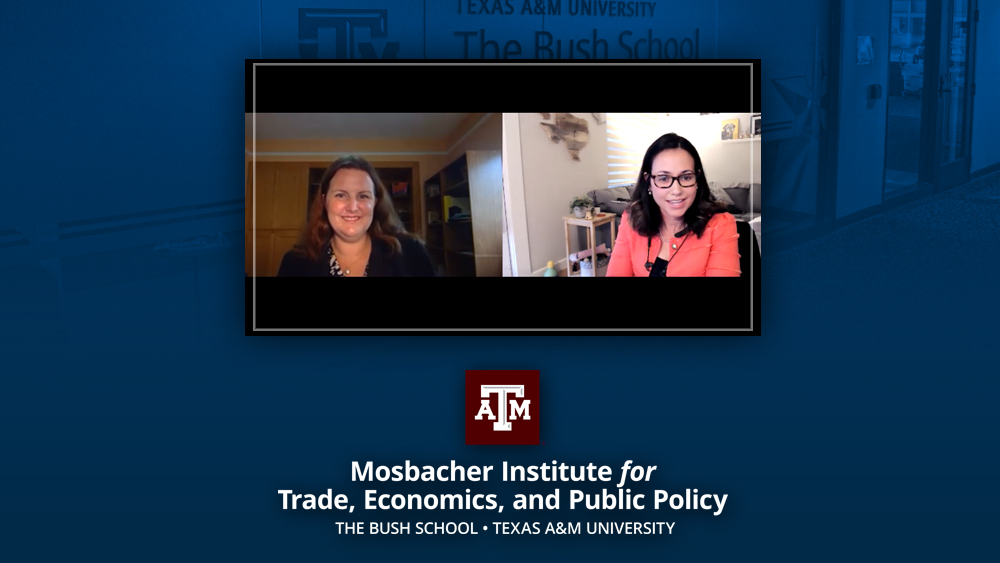
On April 13, 2021, the Mosbacher Institute’s Borders and Migration Program hosted Ms. Ginger Jacobs, a California immigration attorney, who gave a talk titled “Myth-Busting around Immigration and Asylum.” The event was the second in a new speaker series called The Other Side of the Border – Ties That Bind and Issues That Divide, which features practitioners working on the border and in Mexico and Latin America. Dr. Aileen Teague, Assistant Professor at the Bush School of Government and Public Service and organizer of the speaker series, served as moderator.
One of the first common misconceptions, Jacobs explained, is blurring the differences between immigrants, refugees, and asylum seekers. Immigrants are drawn to another country in response to pull factors that may include joining family, school, work, or other reasons for voluntarily moving to a different country. In contrast, refugees and asylum seekers are motivated in response to push factors forcing them out of their home countries. Jacobs also explained the processes that asylum seekers and refugees experience upon entering the United States. Asylum seekers are first required to pass a “credible fear interview” before being assigned to appear at a court hearing at some, probably much later, future date. Refugees arrive first to a third country, where they are vetted by the UN before being sent to a safe country. She offered data to dispute the claim that asylum seekers rarely show up to their hearings, saying 92 percent of asylum seekers appear in court for their hearings, and 98 percent show up when represented by an attorney.
Other myths Jacobs targeted were about the home countries of asylum seekers and the realities of the visa application process. Illustrating her remarks with examples from her clients’ histories, she noted that asylum seekers at the border come from all over the world and that “waiting in line” for a visa is not as easy as it sounds. Because of US policies that limit the number of entrants by country, the visa process can take more than twenty years for people from some countries and only a few years for entrants from other countries. India, China, Mexico, and the Philippines, for instance, have the longest visa lines because they have the greatest number of applicants. The final myth Jacobs busted was the myth that asylum seekers are dangerous, and she suggested that asylum and immigration policies need significant reforming to match the reality that asylum seekers are not dangerous.
In response to the many questions from students, Jacobs and Teague gamely allowed the talk to exceed its original timeframe. Jacobs ended the evening by offering her willingness to continue to engage in conversations with students and the Bush School around immigration law, policy, and career advice.
You can view “Myth-Busting around Immigration and Asylum” on the Bush School YouTube channel.

